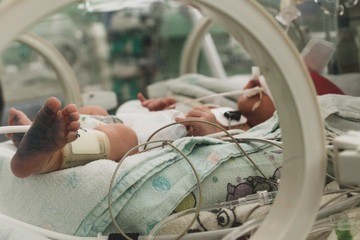Neonatal, maternal and invasive procedures factors associated with late neonatal sepsis in the period 2011-2020 systematic review and meta-analysis.
Factores neonatales, maternos y procedimientos invasivos asociados a sepsis neonatal tardía en el periodo 2011-2020. Revisión sistemática y metaanálisis.
DOI:
https://doi.org/10.25176/RFMH.v22i3.4929Keywords:
Neonatal sepsis, risk factors, Infant, Newborn, Systematic reviewAbstract
Objective: To review, evaluate and synthesize available literature on neonatal and maternal factors and invasive procedures associated with late neonatal sepsis during the last ten years.
Methods: The databases used for the bibliographic search were: Pubmed/Medline, LILACS, SciELO, and Google Scholar. Analytical studies investigating risk factors for late neonatal sepsis by stages (title, abstract and full text) were selected. The risk of bias was assessed using the Newcastle Ottawa Scale. Heterogeneity was set, and a random-effects meta-analysis was performed for the following risk factors: gender, gestational age, birth weight, Apgar score at 5 min, premature rupture of membranes, route of delivery, use of a central venous catheter, and ventilation. Mechanics. The effect was measured with an odds ratio. The certainty of the evidence was determined using the GRADE methodology. The protocol was registered in PROSPERO.
Results: Eight studies from 633 records were collected. Heterogeneity was high. Three male studies OR: 1.97(0.26-14.59) p=0.03; I2 =80%, prematurity 2 studies OR: 2.48 (1.13-5.45); p=0.04; I2 =72%, use of central venous catheter 4 studies – OR: 3.83 (1.07 – 13.71) p<0.01; I2 =89% and mechanical ventilation 4 studies OR: 2.83 (1.42 – 5.68); p<0.01; I2 =86%) were independent factors for the development of late neonatal sepsis. Studies had the lowest comparability assessment score when the risk of bias was applied. The results had low certainty of evidence.
Interpretation: Male sex, prematurity, use of a central venous catheter, and mechanical ventilation are risk factors for late sepsis.
Downloads

Downloads
Published
How to Cite
Issue
Section
License
Copyright (c) 1970 Revista de la Facultad de Medicina Humana

This work is licensed under a Creative Commons Attribution 4.0 International License.



































